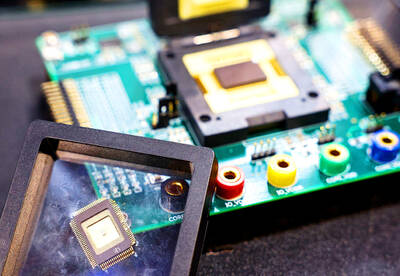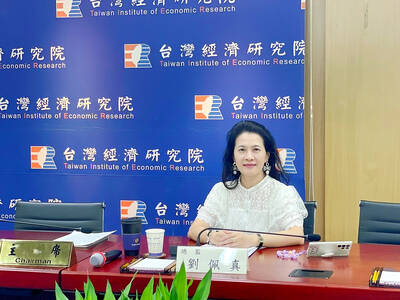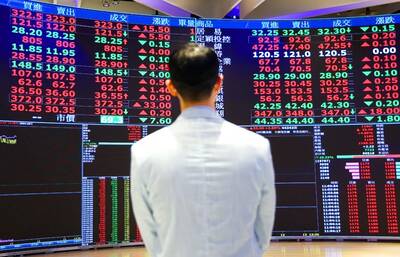Unfazed by predictions of the death of newspapers, billionaire investor Warren Buffett is pumping more money into print.
In the past year, one of the world’s richest men and sharpest investors has put about US$300 million into an industry that some view as heading the way of the horse and buggy.
Buffett’s Berkshire Hathaway holding company late last year bought his hometown newspaper, the Omaha World-Herald, along with related assets in a US$200 million deal some analysts viewed as a sentimental move.
He followed that with a US$142 million deal last month to buy Media General, a chain of 63 newspapers.
He added US$2 million to Lee Enterprises, owner of the St Louis Post Dispatch and Arizona Daily Sun. That is in addition to other holdings, including the Buffalo News and a stake in the Washington Post Co.
“I believe newspapers that intensively cover their communities will have a good future,” Buffett said in a message last month to his newspaper employees.
He said Berkshire “will probably purchase more papers in the next few years” and that he would “favor towns and cities with a strong sense of community.”
However, the investment comes amid dire predictions for the newspaper industry, which has been battered by sharp drops in print circulation and advertising, and getting only modest revenues from online services.
A research note from the financial firm Moody’s earlier this month gave the US newspaper industry a “negative” outlook, saying that digital initiatives are failing to make up for “significant secular pressures.”
“Although newspaper companies seek to capitalize digital revenue through an array of channels, it is unlikely that these gains will be large enough to offset print losses,” Moody’s analyst John Puchalla wrote.
“A complete transformation away from print entirely would eliminate the sizable costs of print production and distribution, but the revenue loss is still too great for companies to make the switch yet,” he added.
Analysts say Buffett, the world’s third-richest individual with a net worth estimated at US$44 billion, is doing what he does best: making a “contrarian” bet by investing in a company or sector beaten down by negative sentiment.
“Newspapers are one-tenth of the price they were a decade ago,” said Ken Doctor, a media analyst with the research firm Outsell.
Doctor said Buffett is finding value in these companies because they often own hard assets, including real estate and broadcast properties, and have a strong brand name in their communities.
“These are great community assets, they have great brands,” Doctor said.
“Buffett is, at base, an opportunistic investor ... See a business, or industry deep in the doldrums and think you can leverage money out of a deal, one way or the other, and you’ve got an opportunity,” he added.
In an interview with the Washington Post, the 81-year-old Buffett said his move was “not a soft-headed business decision,” but the investor said he sees prospects best for newspapers in smaller cities with “a feeling of community.”
However, to make the investment pay off, Buffett will have to find a way to stem losses in the news business and he has indicated he will seek a new “digital strategy” for the companies.
“We must rethink the industry’s initial response to the Internet,” Buffett said in his message. “The original instinct of newspapers then was to offer free in digital form what they were charging for in print. This is an unsustainable model and certain of our papers are already making progress in moving to something that makes more sense.”
Dan Kennedy, a journalism professor at Northeastern University, said Buffett’s strategy was not yet clear.
“If he means that newspaper companies should use their Web sites to come up with complementary content — for instance, breaking news, blogs, features that aren’t in the paper, that sort of thing — then he may be on to something interesting,” Kennedy said. “But if he’s got some sort of ‘back to print’ crusade in mind, then I’m skeptical.”

IN THE AIR: While most companies said they were committed to North American operations, some added that production and costs would depend on the outcome of a US trade probe Leading local contract electronics makers Wistron Corp (緯創), Quanta Computer Inc (廣達), Inventec Corp (英業達) and Compal Electronics Inc (仁寶) are to maintain their North American expansion plans, despite Washington’s 20 percent tariff on Taiwanese goods. Wistron said it has long maintained a presence in the US, while distributing production across Taiwan, North America, Southeast Asia and Europe. The company is in talks with customers to align capacity with their site preferences, a company official told the Taipei Times by telephone on Friday. The company is still in talks with clients over who would bear the tariff costs, with the outcome pending further

NEGOTIATIONS: Semiconductors play an outsized role in Taiwan’s industrial and economic development and are a major driver of the Taiwan-US trade imbalance With US President Donald Trump threatening to impose tariffs on semiconductors, Taiwan is expected to face a significant challenge, as information and communications technology (ICT) products account for more than 70 percent of its exports to the US, Chung-Hua Institution for Economic Research (CIER, 中華經濟研究院) president Lien Hsien-ming (連賢明) said on Friday. Compared with other countries, semiconductors play a disproportionately large role in Taiwan’s industrial and economic development, Lien said. As the sixth-largest contributor to the US trade deficit, Taiwan recorded a US$73.9 billion trade surplus with the US last year — up from US$47.8 billion in 2023 — driven by strong

A proposed 100 percent tariff on chip imports announced by US President Donald Trump could shift more of Taiwan’s semiconductor production overseas, a Taiwan Institute of Economic Research (TIER) researcher said yesterday. Trump’s tariff policy will accelerate the global semiconductor industry’s pace to establish roots in the US, leading to higher supply chain costs and ultimately raising prices of consumer electronics and creating uncertainty for future market demand, Arisa Liu (劉佩真) at the institute’s Taiwan Industry Economics Database said in a telephone interview. Trump’s move signals his intention to "restore the glory of the US semiconductor industry," Liu noted, saying that

STILL UNCLEAR: Several aspects of the policy still need to be clarified, such as whether the exemptions would expand to related products, PwC Taiwan warned The TAIEX surged yesterday, led by gains in Taiwan Semiconductor Manufacturing Co (TSMC, 台積電), after US President Donald Trump announced a sweeping 100 percent tariff on imported semiconductors — while exempting companies operating or building plants in the US, which includes TSMC. The benchmark index jumped 556.41 points, or 2.37 percent, to close at 24,003.77, breaching the 24,000-point level and hitting its highest close this year, Taiwan Stock Exchange (TWSE) data showed. TSMC rose NT$55, or 4.89 percent, to close at a record NT$1,180, as the company is already investing heavily in a multibillion-dollar plant in Arizona that led investors to assume